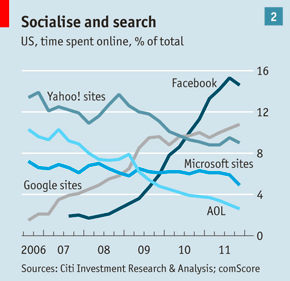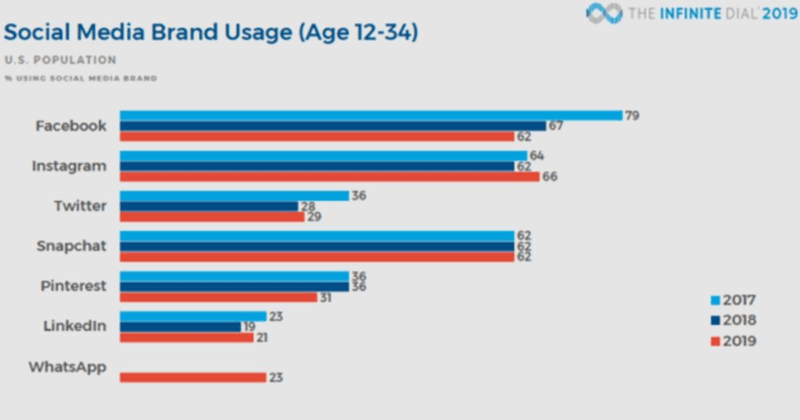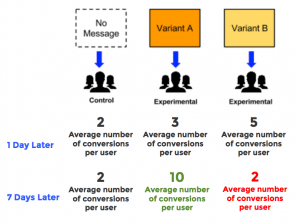In this era of authenticity, good old-fashioned email is undergoing a renaissance.
In December 2010, something unexpected happened: Facebook surpassed Google in terms of website traffic according to The Economist. Over the next few years, the Facebook-dominant phenomenon would repeat in other ways: time spent, usage on mobile devices, user growth, etc. Ten years ago there seemed to be no ceiling to how high, or how fast, social networking would grow. Even when social networks began to stratify – e.g LinkedIn for business and Instagram specifically focused on sharing visual content – there seemed to be market share for every unique segment or audience. The only limiting factor seemed to be the number of humans on the planet, hours in the day and the ability of a given platform to grab their attention. That was nearly ten years ago. That isn’t the case today.

As time went on, and the attention wars intensified. Clear winners and losers emerged. Not all social network platforms were created equal. Some of the names that fell by the wayside
In the last two decades, social networks have redefined how we connect with one another, engage in discourse, read news and partake in a grand online experiment of sharing memories, experiences and ideas. Despite the cosmic scale achieved by social media platforms that didn’t become obsolete, or get swallowed by bigger competitors, there’s a movement away from social media. But if people aren’t running towards social networks anymore, where are they going?

In 2019, there is a marked interest in what the youth might call a vintage technology, and those of us of a certain age know simply as
Email as identifier
The social network as mailbox provider
At one time, during the reign of MySpace, users could have @myspace.com email addresses. It seemed like a great idea to get people to use their social network as their inbox. Facebook tried it too. However, in 2014 Facebook decided it wasn’t in the business of providing mailboxes. Instead, the goal was
Archivability
Email’s power comes from
Hitting the pause button
Email gives recipients the ability to pause a conversation. The pause can take multiple forms, and here’s where marketers need to pay attention. There are good pauses and there are bad pauses. A good pause is one that can be communicated through a preference center. The more robust a brand’s email preference center, the more utility it can provide the recipient to customize the cadence and frequency of conversations. Poorly designed preference centers will by default give recipients the impetus to use a different form of pause: marking a message as spam. When that happens the overall sending reputation of a brand takes a hit. So which would you as a marketer prefer? Delivering less email that’s regarded as high quality enough to keep in the inbox, or being banished from altogether and impacting if you can or can not deliver email to other inboxes?
Self segmentation
I often ask this question when I’m on stage: who here has more than one email address? I’d say 99% of the audience raises their hand (the other one percent is too busy scrolling through their social media). And then I ask how many people have more than two accounts, more than three, more than five, more than 10? Invariably there are those in the audience that will keep their hands up even when I hit double digits. Most people fall into the category of two to four email accounts. The reason for this is
How does this benefit marketers, you ask? It demonstrates the value that recipients place on email. Going through and opening an account to use as a catch-all or a place to store marketing emails for perusal later in the day or at one’s leisure demonstrates the relative value these communications hold. There are services out there that claim to identify primary, secondary and tertiary email addresses. Although it might seem tempting to uncover the numerous email addresses of a given recipient, I would caution against this. Imagine the surprise when a communication arrives in an inbox it was never meant for? The surprise might turn to anger, which in turn becomes a spam complaint and possibly total disengagement from the brand across multiple accounts.
We are in an era of authenticity – pundits have beaten the drum for some years now about how social media can fuel envy, anxiety and lead to unhealthy comparisons. It’s part of the reason why social networks are resonating less and good old-fashioned email is undergoing a renaissance. Sometimes being content with the status quo, and respecting how people have organized their email, is ok.
The real time email
Email is both real-time and passive. Email is sent and delivered, in most cases, in mere seconds. Transactional email especially needs to be as real-time as possible because it’s entire purpose is to substantiate and close the loop on user
At the same time, received
Society is experiencing social media burnout. The simple fact is that we’re aware of how much time Facebook, Twitter
It’s never ‘either,’ ‘or’
I can’t imagine a future without social networks. They have their place. I have some friends that prefer to communicate over Facebook Messenger, others via Slack, yet others rely on SMS and some use all of the tools indiscriminately. The point is that people have choices – just as marketers do. Making the right choice starts by acknowledging that people are unique and need to be treated as such. For marketers, it’s not just about the right message for the right person at the right time, it’s also via the right channel. However, research clearly shows that consumers across generations prefer brands to communicate with them via email versus social. This doesn’t mean that marketers should abandon social media – quite the contrary. Marketers need to better understand how social media can spread authentic messages while reinforcing the brand and humanizing it.
The scandals following the 2016 election, Cambridge Analytica, Brexit, violence in Myanmar, and the polarization of our political discourse, echo chambers, bias confirmation and weaponization of social networks have led to people thinking twice about how much time they spend on social and the kinds of information they share. Email, on the other hand, is the perfect “Goldilocks channel.” It’s not too hot, not too cool, pre-built with a shut-off valve and already in operation for 40-plus years. It’s the place people are turning back to find a little quiet and new, previously forgotten value.
Opinions expressed in this article are those of the guest author and not necessarily Marketing Land. Staff authors are listed here.
Marketing Land – Internet Marketing News, Strategies & Tips
(41)
Report Post







